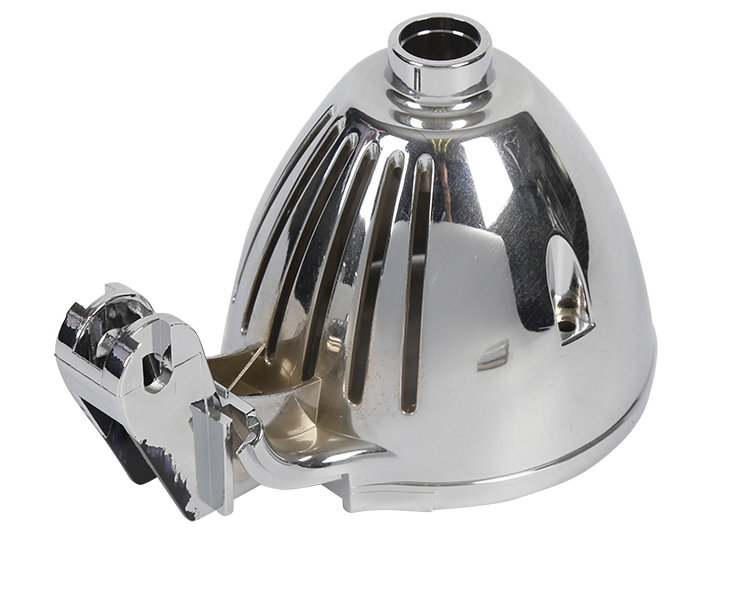1. electroplated nickel parts of the common part of the area to produce dense pinholes, why the rest of there is no or no foundation, usually for poor handling before plating, part of the profile of the parts are excited by oil, hydrophobic film, oxide and so on.
Pinhole is the most common fault in the process of nickel plating, the so-called pinhole is a fine hole that can be seen by eyesight.
The pinhole is produced because there are bubbles in the cathode profile, resulting in insulation so that the metal cannot be deposited there, while the surrounding areas next to the bubbles continue to thicken, and then the bubbles escape or split, leaving sunken marks there, thus forming pinholes.
- There are pinholes in the high current density area of the plating piece, and the notice is that the dissimilar metal impurities are excessive, the boric acid content is insufficient, the pH value of the solution is too high or the current density is too high, which causes the foreign metal impurities to produce hydroxide or basic salt insoluble in water and assimilate in the coating, which makes the coating rough and the bubbles easily adsorbed on it.
There are pinholes in all parts of the coating, which are often excited by the lack of a pinhole agent.
The defect of pinholes in the nickel plating layer is common, which not only affects the decoration but also reduces the protective performance of the coating.
There are many notices that produce pinholes, and a careful examination of the flashing parts and states of the pinholes is helpful to the notices produced by the section.
The pinhole is mainly caused by the retention of air bubbles in the general situation of the plated parts, but there is no need for gambling bubbles to be composed of pinholes.
Because the composition of pinholes must have two conditions: first, there must be bubbles (if hydrogen) produced; second, the bubbles can be adsorbed on the plated parts.
If the resulting bubbles can not be retained in the general situation of the plated parts, there will be no pinholes.
The risk of pinholes in nickel plating conditions some pinholes reach directly to the substrate metal or to the middle of the coating or are slowly closed by the coating.
If the pinhole reaches directly to the matrix metal, the matrix metal is in contact with the atmosphere and is easy to be eroded.
If the pinhole ends in the middle of the coating, it will not be eroded immediately, but it is always the weakness of the coating and the decline of corrosion resistance, which also affects the elegance of the coating, and there are traces of drawing after polishing, which makes the fault more obvious. - The fault of pinholes is a very complex problem. If pinholes are produced because of dominant conditions or different standards of solution composition, the rescue is easy, and the request can be solved only by changing the dominant conditions or adjusting the solution composition to make it suitable.
If pinholes are caused by the infection of impurities (metal impurities or organic impurities) in the solution, the root cause must be found and itching can only be solved.
In the absence of impurities, a simple and useful wetting agent such as sodium dodecyl sulfate can be inserted in glossy nickel plating at a dosage of 0.01g / L 0.05g / L.
In popular nickel plating, 0.1 ml / L of hydrogen peroxide can be inserted after the end of work every day.
After intervening, stir the solution completely.
In the presence of hydrogen peroxide (or other oxidants), the reaction of the reduction of blueprint H + to H 2 on the cathode is replaced by the reduction of the oxidant on the cathode, so that hydrogen bubbles cannot be produced and pinholes can be prevented.
However, if the plating bath contains excessive impurities, the end of these systems will also be affected, or even invalid, at this time the plating solution should be purified.).
There are pinholes in the lower coating of the plated parts, which are often caused by the adsorption and assimilation of organic impurities in the coating so this part is hydrophobic and the gas is easy to retain this part.
The plating parts are coated with pinholes, which is usually caused by the settling of non-conductor suspended matter with high density, which causes the coating to be rough.
How to eliminate the pinholes in the coating.


